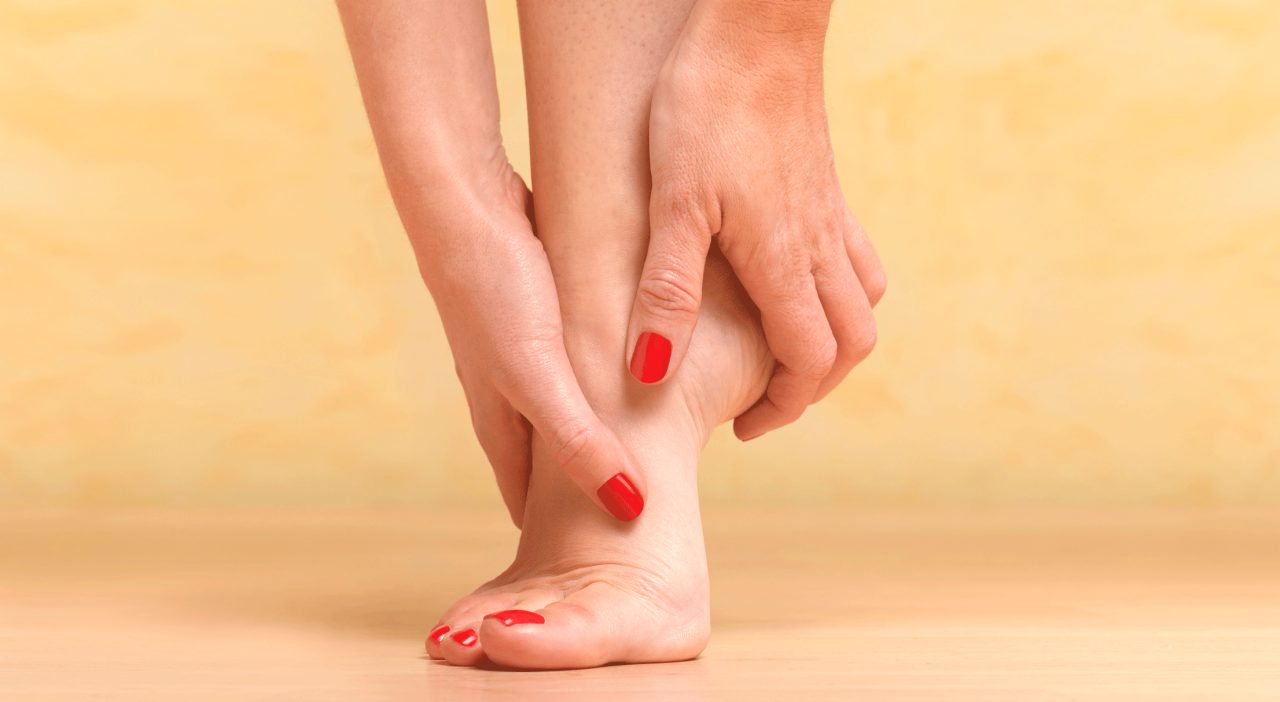Why Do My Feet Ache?

Even if you don’t have arthritis elsewhere, you may have osteoarthritis, the most common form of arthritis, in your feet.
The most common areas for arthritis are the hands, knees, hips, and shoulders — and even your feet and ankles.
Arthritis isn’t only a problem for seniors. Almost a quarter of American adults have arthritis of some kind, 60 percent of them under the age of 65, the Centers for Disease Control and Prevention (CDC) reports. Some 300,000 children in this country have arthritis as well.
Arthritis is an umbrella term that covers more than 100 conditions that can cause joint pain, swelling, a reduced range of motion, and stiffness.
Aching feet could be caused by osteoarthritis, the most common form of arthritis, or several other kinds of arthritis. Your first step will be to determine the cause of your aching feet.
YOU MIGHT ALSO LIKE: Our Pain Care section
What are the symptoms of arthritis?
If you have swelling, pain, stiffness, and a loss of range of motion in a given area, you may have arthritis. The symptoms may come and go or remain about the same for years before becoming more severe.
Osteoarthritis (OA)
This is the wear-and-tear arthritis we associate with aging. You might have it in only one foot or even only one part your foot, such as your big toe. OA tends to develop in spots where you broke a bone in the past and usually causes pain and stiffness when you put weight on the joint.
Gout
If you have sudden extreme pain in one big toe, you probably have gout, which is caused by an accumulation of uric acid. Many people also develop OA in the same toe over time.
Rheumatoid arthritis (RA)
The great majority of people with RA, an autoimmune condition, have aching feet, which can be the first sign. RA will affect both your feet and many of your toes and fingers.
Psoriatic arthritis
You may have psoriatic arthritis, an uncommon skin condition that is sometimes related to psoriasis, before you see any changes in your skin. Usually, this autoimmune problem shows up if you’ve had it in the past or in your family history. If an entire toe swells and looks like a sausage, that’s a tell-tale sign. You might have pain along the sole of your foot (plantar fasciitis) or the back of your heel (Achilles tendinitis)
Ankylosing spondylitis
This kind of arthritis can look like psoriatic arthritis, with pain in your heel or along the sole of your foot or sausage-like toes. It usually causes back pain.
What you can do
See a doctor to investigate the cause of your foot pain. You may need to see a rheumatologist to be certain. You may need blood tests, x-rays, an MRI, or an ultrasound.
Most patients need both medication and therapy to deal with arthritis. If you are diagnosed with a general autoimmune illness like rheumatoid arthritis, make sure you get specific advice for your feet.
Other ways to deal with arthritis:
- Learn to move with less pain. An occupational therapist can show you how to accomplish daily tasks with less pain. You might also consider sessions with a Feldenkrais instructor, who will teach you how to move with less effort.
- Use ice for swelling. Ten minutes in an ice bucket could bring relief. If not, remove your foot from the ice bath for 10 minutes and try again.
- Find shoes with plenty of room for your toes and low heels. A podiatrist may evaluate you to see if you would benefit from a heel cup, arch support, or orthotic sole.
- Get support and learn to calm your response to stress. You might need a combination of a therapist, a support group, meditation, prayer, or a breathing practice.
- Get nutritional advice. If you have gout, you need to avoid fatty red meats, organ meats, shellfish, and beer. If you also have fatty liver disease, stay away from alcohol. With any of the conditions described here, you’ll benefit from a high-fiber, low-sugar diet with plenty of fruits, vegetables, and whole grains.
- Keep exercising. You might be inclined to avoid putting any pressure on your joints. Instead, find the sweet spot that doesn’t cause pain but keeps you active. If it hurts to run, walk, swim, or bike instead. Strength training will help your muscles do more of the work and relieve stress on your joints.
- Lose extra pounds. Give your joints less weight to carry around.
Updated:
August 02, 2021
Reviewed By:
Janet O’Dell, RN